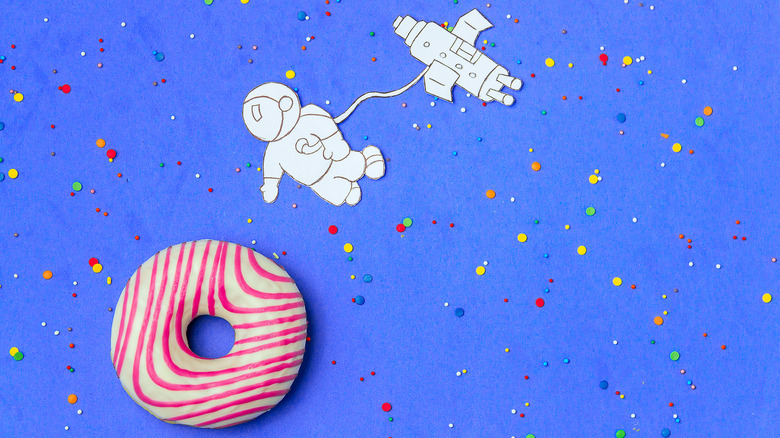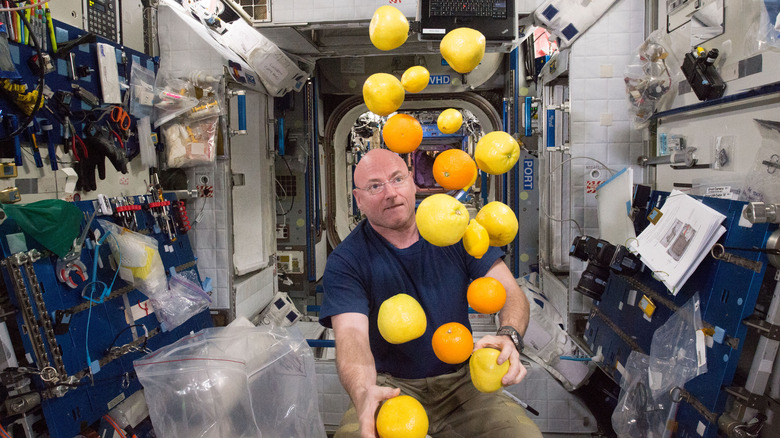NASA Just Sent These Foods To SpaceX Crew Members
If you think the sentence "Falcon 9 rocket launches Cargo Dragon spacecraft" sounds outrageous, wait till you hear about the Octograbber. ClickOrlando reports that Kennedy Space Center saw the successful launch of a Cargo Dragon today – the joint mission of NASA and SpaceX to bring supplies to the astronauts of the International Space Station. According to Space.com, the gumdrop-shaped craft is designed to hold 20% more cargo than previous iterations of the capsule, which means more than 4,800 pounds of cargo headed the crew's way. The fancy new version of the Dragon cargo craft can also stay docked on the station twice as long as the old version and splashes down in the Atlantic Ocean (as opposed to the Pacific), which means a quicker return on scientific queries.
But the real question on everyone's mind is obvious: what kind of food is being sent to the ISS? Are astronauts eating space food out of toothpaste tubes, or have we made some advancements in the 20 years that the ISS has been occupied? NASA reports that yes, we definitely have, and the international nature of the ISS means that the menu has culturally diverse options as well. In 2019, a craft even delivered a Zero G oven with the express scientific purpose of seeing whether it was possible to bake cookies in space. (Good news: the astronauts sent back freshly baked chocolate chip cookies just a couple of months later.)
Fruits, vegetables, and maybe a treat or 2 make their way to space
This time, the requests from the ISS crew seem to be fairly straightforward: fresh groceries to resupply the station's food cupboard. "We're sending up a good amount of fruit," Joel Montalbano, ISS program manager for NASA, told Space.com. "We have lemons, onions, some avocados, some cherry tomatoes, and also some ice cream. That's a big hit with our crew." NASA explains that fresh fruits and vegetables, given their short shelf life, are the most highly sought after – and difficult – foods to supply. Luckily, astronauts are getting pretty good at growing their own lettuce aboard the ISS.
Also aboard the Dragon cargo craft is what Space.com is calling "a treasure trove of science investigations," like a new robotic arm to be tested out in the station's airlock. And speaking of that robotic arm, here's the big news on the Octograbber: A new, autonomous drone ship, called A Shortfall of Gravitas, was also used for this particular mission, according to ClickOrlando. Falcon 9 booster needed only 8 minutes to arrive after it launched, and it was the Octograbber robot that secured the rocket to the ship. You can't make this stuff up, guys.

